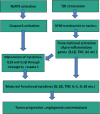Pattern Recognition Receptors in Cancer Progression and Metastasis
- PMID: 26279628
- PMCID: PMC4514171
- DOI: 10.4137/CGM.S24314
Pattern Recognition Receptors in Cancer Progression and Metastasis
Abstract
The innate immune system is an integral component of the inflammatory response to pathophysiological stimuli. Toll-like receptors (TLRs) and inflammasomes are the major sensors and pattern recognition receptors (PRRs) of the innate immune system that activate stimulus (signal)-specific pro-inflammatory responses. Chronic activation of PRRs has been found to be associated with the aggressiveness of various cancers and poor prognosis. Involvement of PRRs was earlier considered to be limited to infection- and injury-driven carcinogenesis, where they are activated by pathogenic ligands. With the recognition of damage-associated molecular patterns (DAMPs) as ligands of PRRs, the role of PRRs in carcinogenesis has also been implicated in other non-pathogen-driven neoplasms. Dying (apoptotic or necrotic) cells shed a plethora of DAMPs causing persistent activation of PRRs, leading to chronic inflammation and carcinogenesis. Such chronic activation of TLRs promotes tumor cell proliferation and enhances tumor cell invasion and metastasis by regulating pro-inflammatory cytokines, metalloproteinases, and integrins. Due to the decisive role of PRRs in carcinogenesis, targeting PRRs appears to be an effective cancer-preventive strategy. This review provides a brief account on the association of PRRs with various cancers and their role in carcinogenesis.
Keywords: HMGB1; damage-associated molecular patterns (DAMPs); inflammasome; pattern recognition receptors (PRRs); toll-like receptors (TLRs).
Figures



References
Publication types
LinkOut - more resources
Full Text Sources

